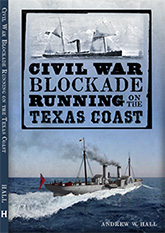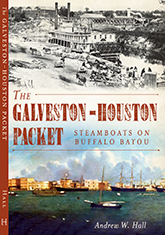“The value of this communication destroyed can not be expressed in words or money”
UPDATE, August 21: A reader identifies both the location and elements of this image.


A discussion came up elsewhere of this image, of a burned-out bridge and locomotive in Virginia. The Library of Congress caption is “Petersburg, Virginia (vicinity). Ruins of locomotive and railroad bridge across the Appomattox River.” It would be nice to identify the exact location, though. The LoC’s caption identifying it as being in the Petersburg “vicinity” is of limited use.
Looking at period maps, I can only tell of one railroad bridge across the Appomattox, that of the Weldon & Petersburg Railroad, and that was actually at Petersburg:
![]()

![]()
Although a few maps, like this one from the OR Atlas, suggest there might have been two, connected:

![]()
There are several references to the Navy Department being anxious to destroy this bridge in the ORN, such as this June 1862 letter from Assistant Secretery of the Navy Gustavus Fox to Flag Officer Goldsborough:

G.V. FOX Flag-Officer GOLDSBOROUGH.
![]()
Gotta love that line, “provided it is done before McClellan fights.” Heh. No rush, dood.
Hindsight about McClellan’s aggressiveness notwithstanding, Fox’s letter is really interesting, because in it he not only urges destruction of the bridge, but commits the government to up to $50,000 in extra expenditures in order to accomplish it — I think that’s pretty rare.
Fox wanted John Rodgers to do the job, but Rodgers though it was simply not plausible as a naval exercise, and suggested instead it might be better to recruit saboteurs to do the job:
![]()
Off City Point, June 22, 1862. SIR: I have the honor to acknowledge the receipt of your letter of the 21st instant in regard to burning the railroad bridge at Petersburg, Va. The subject had already engaged my attention, and I met the following difficulties: The gunboats can not send a boat on shore without danger of an ambush. Every movement is carefully watched by armed men. We are not able to communicate with the inhabitants except with danger to them and to us. I have concluded that in Norfolk or at Fortress Monroe, where free intercourse can be had with Union men, citizens of Virginia, must be sought the agents for this work. The Appomattox, scarcely wider than a canal, has its channel obstructed by vessels and lighters sunk in the bottom of the river. It runs through banks which absolutely command any rowboats upon its waters. We can not approach by steamers, and rowboats would be destroyed. When I last heard from Petersburg, about a month ago, by two deserters, there were some 6,000 or 7,000 troops there under General Huger. If I see any opportunity of carrying out the subject of your letter, I shall zealously do so. Very respectfully, your obedient servant, JOHN RODGERS,
Commander. Flag-Officer LOUIS GOLDSBOROUGH,
Commanding North Atlantic Blockading Squadron.
![]()
Goldsborough, caught between a Navy Department that wanted it done, like, yesterday, and a respected and capable subordinate who said, in effect, “this is a terrible idea,” cast about for an alternative:
![]()
Flag-Officer.
![]()
![]()
The “submarine propeller” he refers to is the submersible Alligator (above), which has an interesting history of its own, but was unsuccessful in an attempt to destroy the bridge at Petersburg. Goldsborough subsequently followed Rodgers’ advice and recruited saboteurs to do the job:
![]()
Norfolk, Va., June 29, 1862. SIR: As the expedition up the Appomattox has not resulted favorably to the object it had in view, I have this day engaged two reliable persons, whose names I will give you hereafter, to proceed from this to the proper place and do the work. The men, I have every assurance, are entirely and thoroughly reliable. In the event of complete success each is to receive $25,000, and in case one of them should be taken and put to death for the destruction committed his brother in California is to receive $12,500, his sister in Richmond $6,250, and his stepsister, also in Richmond, $6,250. I have made confidential notes of the names, etc., of the parties, all of which will be duly forwarded when necessary. Commander Rodgers, as you will perceive by copies of communications from him which I forward by the mail of to-day, has, on finding the submarine propeller of no use to him, and for other reasons, sent it to Fort Monroe. Had I not better send it to Washington for safe keeping? At best it can only operate successfully in clear and tolerably deep water. All the experiments required by the Chief of the Bureau of Yards and Docks can be much better conducted at Washington than here, particularly at this very critical conjuncture of our affairs hereabouts. Very respectfully, your most obedient servant, L.M. GOLDSBOROUGH,
Flag-Officer. Hon. GIDEON WELLES,
Secretary of the Navy, Washington City.
![]()
I’m not sure what, if anything, became of this mission, or how the bridge in the photograph came to be destroyed.
______
The other thing that’s interesting is that in his memo of June 20, Fox mentions a second bridge, on the same north-south route, over Swift Creek, north of Petersburg, on the Richmond & Petersburg Railroad:
![]()

![]()
Given that LoC captions — usually based on notations that come with the image when they’re transferred to them — are oftentimes imprecise, I believe this image of the burned bridge and locomotive may not be on the Appomattox River at all, but may be of the remains of the bridge at Swift Creek. (The LoC has a bunch of images of Federal gunboats captioned as being on the Appomattox, while I feel sure they’re actually on the James.)
Rodgers complained about the hazards of navigating the Appomattox River to Petersburg, but the waterway shown here, even given the seasonal rise and fall of creeks and rivers, isn’t enough to run an aluminum john boat. The course of the river shown in the image — turning sharply left in the background — seems to be a better fit for the Swift Creek crossing than for Petersburg. Note also that the banks are low here, contra Rodgers’ description of the Appomattox River around Petersburg.
Thoughts?
___________






Andy-
Another of my many pending (to put it mildly) research projects involves identifying all of the many (at least a couple of dozen) wartime photos of the cotton mills around Petersburg. They also have singularly unhelpful captions (“Cotton Mill, Petersburg, Va.”), in view of the fact that when the war started Petersburg was one of the South’s most heavily industrialized communities. In 1860 there were 8 cotton factories, a woolen mill, 3 flour mills, and a paper mill in or around town. In August 1863 a good bit of their collective production of osnaburg went to Charleston to be sewn into those sandbags that Craig Swain has written about. In 1864 the Battersea, Ettrick and Matoaca factories shipped the Confederate govt. more than a million and a half yards of cloth. Some of the mills survived the war, and can be found on 1880s-era Sanborn insurance maps.
That said, the burned out building does not look like a mill or factory. Using the man standing at its corner as a guide, the whitewashed stone foundation was about 20 feet wide and 35 feet long, and the building was no higher than one story above that basement, with an attic. There was a one-story wing to the rear, which probably held a kitchen. The farthest chimney had a paneled surround, burned off in the fire to show the unpainted brick. This suggests to me that the building was domestic, not commercial, with the steep peak of the gables suggesting late 18th/ early 19th-century construction. Given its location it might have been some kind of inn or ordinary.
The bridge itself was built on rusticated stone piers, a very upscale quarrying technique, and was a covered bridge- at least, the portion from the pier to the shore in front of the structure was covered, given the amount of heat-crumpled sheet metal lying in the river bed. This may explain why the locomotive and tender was parked out on the bridge at the time of its destruction- parked under cover of the bridge roof. There are also two sets of trucks from a burned boxcar visible on the embankment between the structure and the dam.
The railroad bridge crossed the river at an angle, trending towards the multitude of buildings on the far bank in the center distance. Toward the right of this industrial complex two roads approach the river at angles, converging and either running together along the river bank or crossing the river on some kind of ford.
If this was the bridge across Swift Creek, then these should be the spot identified as “Factory” on your map, as there are no other buildings indicated on either side of the creek on that section of the map. The cotton mill on Swift Creek in Petersburg was the Mechanics Manufacturing Company, organized in the mid-1830s. Cotton mills of that time, north and south, were at least three stories on a masonry foundation. But when enlarged (I checked the largest size photo on the LC website), these are obviously not textile manufacturing buildings. None of them are of masonry construction, and only one small one is two-stories tall. In fact, they appear to be some major railroad-related facility. The long center building has a shed roof open on both the end and side facing the river, with the two end bays high enough that a locomotive could enter, and there is a roof vent which would allow the engine smoke to escape. A boxcar is standing just in front of one end bay, and two smaller wooden cars (coal or ore cars?) are parked on a siding running parallel to the building. A trestle of some kind comes from this area, running off-scene behind a building on the riverbank, and making me think that it could be running to something like a turntable in the vicinity of the cars at the end of the big equipment shed.
All of this to me says “central Petersburg,” but I can’t make the converging roads, railroad sidings and etc. fit to any of your maps. But the maps might not have kept up with the wartime changes. Wilson Greene, in Civil War Petersburg (2006) says on page 115 that “Two rail improvements did occur in midwar Petersburg. A new bridge across the Appomatox River opened in late September 1863, replacing the substandard span constructed in 1861….” So the V-track arrangement on your second map might be the most correct. But still difficult to match up to the detail in the photo.
I think the hydrology says “Swift Creek,” but other than that I am guessing.
I saw another reference in the OR that the bridge over Swift Creek was 280 feet long, which seems about right in the photo. But — and this may be significant — I haven’t found a clear reference to that bridge ever having been destroyed.
That is a good point. The Swift Creek Bridge was a target of Butler’s during the Bermuda Hundred Campaign, but he did not succeed. After that it was behind Confederate lines. Hmmm …
Dave Bright, who runs the Confederate Railroads website, came across a late 1865 annual report of a bridge being washed out on the City Point Railroad, with the loss of a locomotive, at an unknown date in the previous year. But City Point was a very short road, and I’m not clear if it crossed any streams the size of the one in the picture.
I’d look through all the maps I have of the Petersburg area looking for a likely alternative but I have this thing called a job …
There are 2 candidates that I find in the written record:
1st, from the South Side RR annual report of 10/1/65, President’s Report:
“In Petersburg {after the evacuation} the bridge to the shops, 350 feet long, was burnt, with two locomotives and all the cars that could be placed on it, …” I believe this was west of the bridges you show in the maps you post. I’ve seen it on at least one LOC map. Problem, the photo only shows one locomotive.
2nd, from the Richmond & Petersburg annual report, 10/1/65, Superintendent’s Report:
“Another of the engines — the M. W. Baldwin — whilst in the service of the United States military railroad department, was accidentally (by the washing away of a bridge on the City Point road) thrown into a creek, where it remained for some weeks, and was so much injured as to be of little value.” Though an R&P loco, it was on the South Side RR east of Petersburg (on the City Point branch). I think this is the locomotive pictured.
I agree: Possibility 2 seems a lot more likely. Besides the missing second locomotive, it’s difficult to see any fire damage in that photo. The support to right of center doesn’t show any scorching; the ties on the section of track to the right of the support appear intact. My guess would be that we’re looking upstream, and the half-buried situation of the locomotive and the way the track is twisted looks a lot more like the aftermath of a flood. The support itself looks to be only 15 to 20 feet high, which would be about right for a creek. If that is the remains of a tin roof there to the left, it looks (to me, anyway) more as if it was molded to the shape of the bank by water pressure than melting.
My 2 cents, anyway.
The City Point RR crosses a couple of creeks near Petersburg, inside the original Dimmock Line, but outside the lines as taken up after the June, 1864, initial assaults.
Folks:
This photo was taken near the present-day ruins of the Peter Jones trading post at the northern end of Market Street in Petersburg, looking eastward towards the railroad bridge across the Appomattox River to the Southside Railroad shops. The SS shops were located in present-day Colonial Heights in what is today known as Appamatuck Park. The bridge crossed the western end of Flea Island, so actually there were two bridges, one between Petersburg and Flea Island, and a second from Flea Island to present-day Colonial Heights. The river channel on the Petersburg side of the island (south channel) was wider back then than the northern channel, but was clogged with silt, As a result, when the bridge was burned by the Confederates, the locomotive on it fell in the shallow water and was still visible from the Petersburg side. The northern channel, on the other hand, is about 35 feet deep. When that bridge was burned, the second locomotive fell into the deep water, hidden from view. It still sits on the river bottom today.
Most of the river shown in the photo where the locomotive sat was filled in during the early 1900’s for a flood control dike and to expand the N&W railroad yard. The building ruins in the photo are of burnt railroad buildings located on Flea Island. The railroad shops, and the north bridge are not visible in this photo.
Note that to the left of the bridge, on Flea Island, there is a stone retaining wall to protect the railroad grade across the island. That stone wall is still there today.
In the background behind the bridge pier is the western edge of the Petersburg neighborhood of Pocahontas. The shed shaped building is the Richmond & Petersburg Railroad depot at Pocahontas. A drawing of this depot appeared in the December 13, 1862 issue of Harper’s Weekly. Note that the Pocahontas depot was not the subject of this photograph. The photographer was seeking a disaster shot that would sell, thus the photo of the train in the river. There were several photos taken of the R&P RR depot in Richmond that burnt during the Confederate evacuation, but none of the one at Pocahontas that did not burn. There is a boxcar and several hopper cars visible in the photo. The hopper cars would have been used to transport coal from the WInterpock coal mines in Chesterfield to Richmond and Petersburg. In front of the buildings you can see the Manchester & Petersburg Turnpike as it enters Pocahontas from present-day Colonial Heights.
During the Civil War, Pocahontas was located on the north side of the Appomattox River. In 1904, the Corp of Engineers dug a new channel to divert the river to the north of Pocahontas. This Diversion Channel separated Pocahontas from Colonial Heights. This is why the Civil War era maps of that section of the Appomattox River are different from the present-day maps.
The Southside Railroad shops across the river from Petersburg were not destroyed during the Confederate evacuation of Petersburg. The bridges were rebuilt after the war and the shops continued to serve the railroad until the late 1880’s when the railroad was reorganized as the Norfolk & Western. The new management moved the shops west to an undeveloped area known as Big Lick, which developed into the City of Roanoke, Va.
Ben Uzel
President
Colonial Heights Historical Society
Fantastic, thank you!